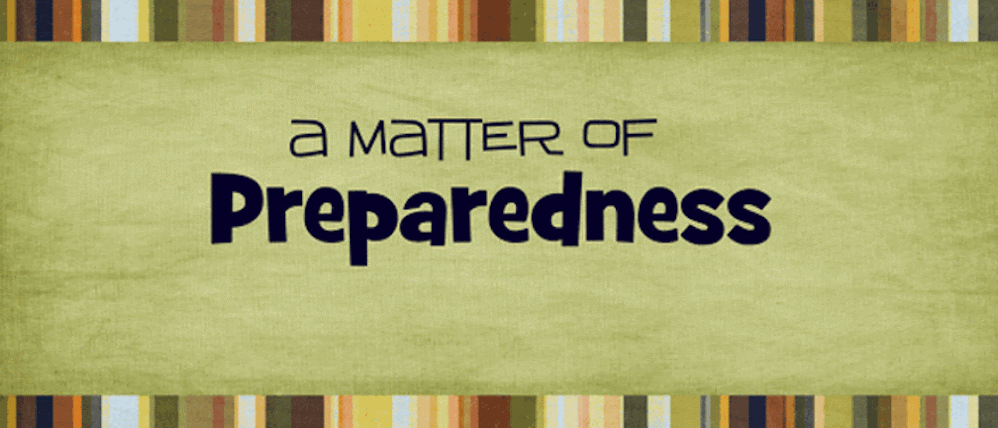This week, my son had a big assignment due on Urban Legends. These are tales that are either told or passed around the Internet. Often, there is some factual basis to them, but most are not credible. Some can be very entertaining as well.
As you know, our topic of focus for this past week has been on Butter. We have discussed butter as a powder, and also tips on freezing butter.
Today we are going to talk about canned butter. The picture above features Red Feather brand canned butter. The LRH has some of this in her storage. We have tried it, and my family was pleasantly surprised with it's taste. Seeing that it came from a can was concerning to them, but once they had tasted it, it was placed on the "it's okay" list for them. You can purchase this brand from Macey's, Alpine Food Storage, MREdepot.com, and other online businesses. It runs around $4.00 per can, and reportedly will last ~20 years.
Here is where the Urban Legend comes into play. If you search the Internet, you will find many sites that give directions to "can" your own butter in canning jars. It usually includes heating your jars in the oven, melting butter, pouring it into the jars, putting on the lids and rings, and allowing the jar to seal on it's own. Sounds simple enough doesn't it? The question then becomes.........."is it safe?". The LRH has a dear family member who uses this method and has not had any negative effects. She stated that she used her last jar recently and is getting ready to do another batch.
The USDA provides guidelines for canning. They have specifically stated the following regarding this form of
canned butter. The major points are that this is a low-acid food and that it is not truly being canned. This was concerning for the LRH...who loves to find unique ways to prepare. So, I continued my research and found the following information from
Prepare University.org. This method provides for Pressure canning....which addresses the botulism question. They state that the USDA has
"such a procedure for canning fat-containing broth and soup. That procedure calls for a 20-minute canning time at the pressure recommended for 2000ft elevation" The LRH looked at recipes from the USDA and from the Ball Canning book for broths and some soups. The guidelines were often pressuring for 20-25 minutes.
So....where are we going with all of this? To experiment on the "word". I tried the procedure suggested by Prepare University (with standard sanitary procedures which I will point out) and here is the pictorial tour:
Take 7 lbs of butter. I found that I could fit it all on my large cookie sheet. The instructions say to let the butter become the consistency of pancake batter...which was taking a long time. You all know by now that the LRH is not always a patient person. So the instructions suggested the use of an oven or microwave to help soften, but not melt the butter.
So, I turned my oven to 250 degrees Fahrenheit. I placed the butter into the oven, but saw that it was melting. I then turned the oven off, propped the door open for a few minutes, then closed the door again. This seemed to work.
This looks odd, I know. But I used my 'clean' finger to test the consistency of the butter until it was right.
In the meantime, I sterilized my jars in the dishwasher.
Place your canning funnel in your jar. The instructions tell you to use 8 pint jars. Of course, I wanted to do something different, so I used half-pint jars as they are equivalent to one cup.
Slide the softened butter through the funnel into the jar.
You can see how soft the butter is and that it easily comes off the cookie sheet with a rubber spatula.
When the butter was in the jar, I noticed air pockets, which is traditionally is frowned upon in canning. So I used a long, thin rubber spatula and pushed the product into the jar. I did this not only on the sides, but through the middle as well. I was able to put more butter into the jars doing this.
It is very important to have a clean surface on the jar rim. I used my microfiber cloth initially on this 'rough' side to wipe the rim and the first 1/2 inch inside and out. This side of the cloth removed any lumps of butter, but still left a residual slick surface that could impede the jar sealing correctly.
I then used the other side and repeated the same process to ensure the rim was clear and clean.
I then place a sterilized lid (which had been brought to a boil in a pan of water) on top of the jar and placed a ring on the jar.
After placing the jars into my pressure-cooker canner, I let it vent (steam 'shoot' out) for 10 minutes and then pressured them for 20 minutes at 15 lbs pressure due to my altitude. This is what the jars looked like after they came out of the canner. The jars began to 'pop' and seal almost as soon as I took them out of the canner.
The instructions say to shake the bottles every 45 minutes until they set up. This is what they look like after shaking. I found that I had to do this several times.
This is the end result after the butter sets.
So, what do you think? The author from Prepare University quotes an unnamed source who stated the following: I have read Internet recipes for oven-canning and water-bath-canning margarine and butter. I’ve worked in public health and food safety too long to trust any recipe that can’t be expected to kill botulism. While this recipe doesn’t have USDA approval, I feel it is sufficient to kill botulism spores.
The author of the method, and my family member, stated that the butter will be a bit grainy. The purpose isn't really to spread on bread, but to use in cooking in things like Alfredo sauces etc. My family member stated that it makes really good honey butter as well.
So, make your own choice. I personally feel more comfortable with the pressure-canner method as it really does address the concerns made by the USDA. Please know that the cumulative process took hours, but only a few minutes at a time to put into jars, to shake, etc. You also need to use your butter, reportedly, in 6-9 months. If you are rotating your supplies, this would be doable.
So what is the cost to make this? As noted at the beginning, I stated that the Red Feather brand costs about $4.00 a can, which is just larger than a 1 Cup measure. Using this method, I canned 1 Cup of butter for just under $1.00.
The final benefit to this is that you would have butter if you lost your power. If you had Butter Powder, this would also be true. So....make a decision that works for your family.












































